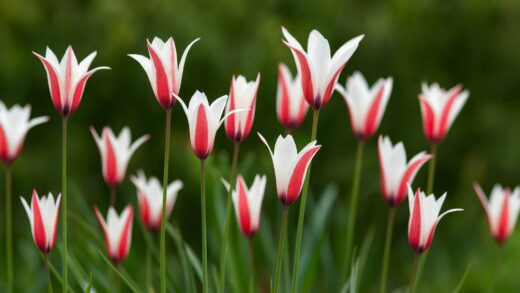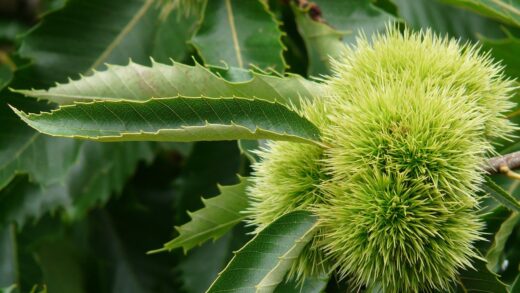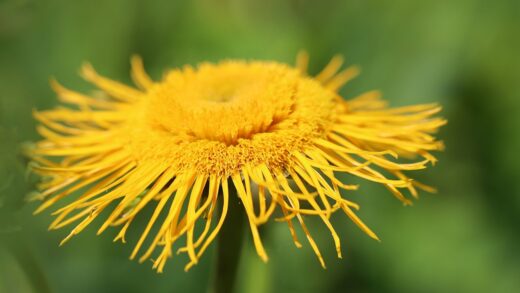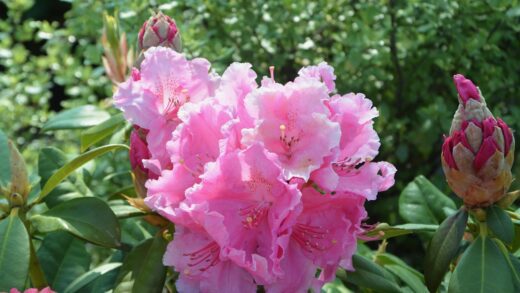While Bidens ferulifolia is generally regarded as a robust and relatively trouble-free plant, it is not entirely immune to the pressures of pests and diseases. Providing the plant with its ideal growing conditions—plenty of sun, good air circulation, and well-drained soil—is the most effective form of prevention, as healthy, vigorous plants are inherently more resilient to attack. However, even with the best care, problems can occasionally arise. Being able to identify common issues early and intervene promptly is key to maintaining the health and beauty of your floral display and preventing minor problems from escalating into major infestations or infections.
The most common adversaries for the gold of the balcony are typically sucking insects, which feed by piercing the plant’s tissues and extracting the nutrient-rich sap. Aphids are one of the most frequent culprits. These small, pear-shaped insects can be found clustered on new growth, tender stems, and the undersides of leaves. Their feeding can cause leaves to curl, yellow, and become distorted, and in large numbers, they can weaken the entire plant. Aphids also excrete a sticky substance called honeydew, which can lead to the secondary problem of sooty mold, a black fungus that grows on the honeydew and can interfere with photosynthesis.
Another common pest is the spider mite, which is particularly prevalent in hot, dry conditions. These tiny arachnids are difficult to see with the naked eye, but their presence is often revealed by a fine, silky webbing on the plant, especially between leaves and stems. They feed by sucking the contents out of plant cells, leading to a stippled or speckled appearance on the leaves, which may eventually turn yellow or bronze and drop off. A severe infestation can quickly defoliate and severely weaken the plant.
Whiteflies can also pose a problem, especially in greenhouse settings or sheltered locations. These small, moth-like insects will fly up in a cloud when the plant is disturbed. Like aphids, they feed on sap and excrete honeydew, causing similar damage such as yellowing leaves and stunted growth. Regular inspection of your plants, paying close attention to the undersides of the leaves where these pests often congregate, is the first and most critical step in effective pest management.
Common fungal diseases
Beyond insect pests, the gold of the balcony can sometimes be susceptible to a few common fungal diseases, particularly when environmental conditions are less than ideal. Powdery mildew is perhaps the most recognizable of these. It appears as a white, powdery or dusty coating on the surfaces of leaves, stems, and sometimes flowers. This disease thrives in conditions of high humidity and poor air circulation. While it may not kill the plant outright, it is unsightly and can interfere with photosynthesis, gradually weakening the plant over time.
More articles on this topic
Root rot is a far more serious and often fatal disease, and it is almost always caused by improper watering and poor drainage. When the soil remains waterlogged for extended periods, it creates an anaerobic environment that is favorable for fungi such as Pythium and Phytophthora. These pathogens attack the root system, causing it to decay and turn brown and mushy. Above ground, the plant will exhibit symptoms like wilting (even when the soil is wet), yellowing leaves, and stunted growth, as the compromised roots are no longer able to absorb water and nutrients. Prevention, through the use of well-draining soil and proper watering techniques, is the only effective cure.
Botrytis blight, also known as gray mold, is another fungal issue that can affect Bidens, especially during cool, damp weather. It typically attacks flowers, buds, and stems, causing them to develop soft, brown spots that are soon covered by a fuzzy, grayish-brown mold. It often starts on old, spent blooms that have not been removed from the plant. To prevent botrytis, it is important to practice good garden sanitation by deadheading faded flowers promptly and ensuring there is adequate air movement around the plant to help the foliage and flowers dry quickly.
Less commonly, leaf spot diseases can occur, appearing as distinct spots or blotches on the foliage. These are caused by various types of fungi or bacteria and are often exacerbated by overhead watering that leaves the foliage wet for long periods. While usually a cosmetic issue, severe infections can cause significant leaf drop. The best preventative measure is to water the soil directly at the base of theplant, avoiding wetting the leaves whenever possible.
Integrated pest management
An integrated pest management (IPM) approach is the most sustainable and effective way to deal with pests on your Bidens. This strategy emphasizes prevention and uses the least toxic control methods first, resorting to chemical pesticides only as a last option. The first line of defense is cultural control, which involves creating a healthy growing environment. As previously discussed, providing full sun, good air circulation, and proper watering builds a strong plant that can naturally fend off many problems.
More articles on this topic
Mechanical control is the next step. This involves physically removing the pests from the plant. For a small infestation of aphids, for example, a strong jet of water from a hose can be very effective at dislodging them. Larger insects can be picked off by hand. Regularly inspecting your plants and taking action at the first sign of trouble can often prevent a small number of pests from turning into a major infestation that requires more drastic measures.
If physical removal is not sufficient, biological control can be introduced. This involves encouraging natural predators in your garden that feed on common pests. Ladybugs, lacewings, and hoverflies are all voracious predators of aphids. Planting a diversity of flowering plants can help to attract these beneficial insects to your garden, creating a natural and self-regulating pest control system. This approach fosters a balanced ecosystem on your balcony or in your garden.
Only when these other methods have failed to control a severe infestation should chemical intervention be considered. Start with the least toxic options, such as insecticidal soaps or horticultural oils like neem oil. These products work by smothering the soft-bodied insects and have a lower impact on beneficial insects and the environment compared to broad-spectrum synthetic pesticides. Always read and follow the label instructions carefully when using any pest control product.
Disease prevention and treatment
The cornerstone of disease management for Bidens ferulifolia is prevention. Creating an environment that is inhospitable to fungal pathogens is far more effective than trying to cure a disease once it has taken hold. This begins with providing excellent air circulation. When planting, give your Bidens adequate space from its neighbors. If it is in a mixed container, periodically thin out some of the growth to ensure that air can move freely through the foliage, which helps it to dry out quickly after rain or watering.
Proper watering hygiene is also paramount. As mentioned, always water the soil at the base of the plant rather than watering from overhead. Wet foliage, especially overnight, is a primary invitation for fungal diseases like powdery mildew and botrytis. Furthermore, adhering to a watering schedule that allows the top few centimeters of soil to dry out between waterings is the single most important action you can take to prevent the development of catastrophic root rot.
Good garden sanitation plays a vital role. Promptly remove any yellowing or diseased leaves from the plant and clean up any fallen plant debris from the soil surface. Deadhead spent flowers regularly, as decaying floral tissue is a common starting point for botrytis blight. At the end of the season, if you are treating your Bidens as an annual, remove the entire plant from the container or garden to prevent any lingering pathogens from overwintering in the soil.
If a fungal disease like powdery mildew does appear despite your best efforts, you can treat it with horticultural oils or a sulfur-based fungicide. Neem oil is a good option as it has both fungicidal and insecticidal properties. For organic gardeners, a homemade spray of one part milk to nine parts water can also be surprisingly effective against powdery mildew when applied in bright sunlight. For any treatment, ensure you get good coverage on all affected plant surfaces, including the undersides of the leaves.
Specific pest identification and control
To effectively control pests, it is helpful to know specifically what you are dealing with. For aphids, which cluster on new growth, a strong spray of water is often the first and best defense. If they persist, an application of insecticidal soap is highly effective. The soap works by disrupting the cell membranes of the soft-bodied insects. Be sure to coat the aphids thoroughly, paying special attention to the undersides of leaves where they often hide.
For spider mites, which thrive in hot and dry conditions, increasing the humidity around the plant can help to deter them. Misting the plant with water can create a less favorable environment for them. If an infestation is established, horticultural oils, including neem oil, are very effective. These oils work by smothering the mites and their eggs. Repeat applications are often necessary to control the entire life cycle of the pest.
To control whiteflies, yellow sticky traps can be very useful for monitoring their population and trapping the adult flies. These traps will not eliminate the problem on their own but can significantly reduce the number of adults. For the nymph and egg stages on the undersides of the leaves, insecticidal soap or neem oil sprays are the recommended treatment. Thorough coverage is essential for these products to be effective against all life stages.
It is critical to remember that when using any spray, whether it is a horticultural oil, insecticidal soap, or fungicide, to apply it during the cooler parts of the day, such as the early morning or evening. Applying these products in the direct, hot sun can cause the leaves to burn, a condition known as phytotoxicity. Also, always test the spray on a small, inconspicuous area of the plant first and wait 24 hours to ensure there is no adverse reaction before treating the entire plant.




















